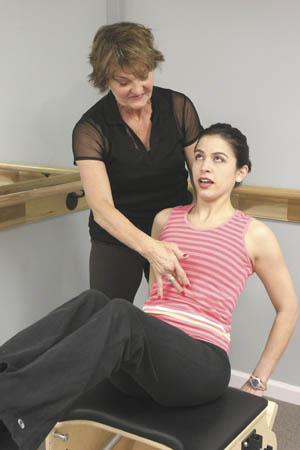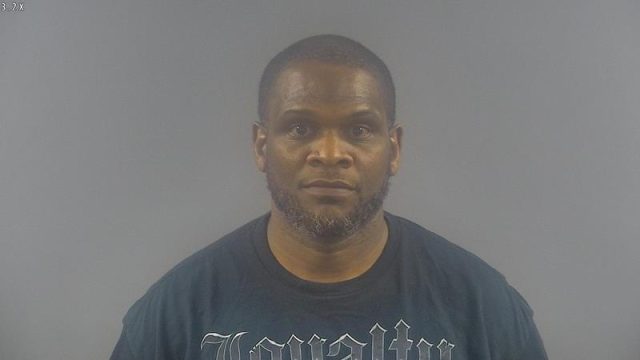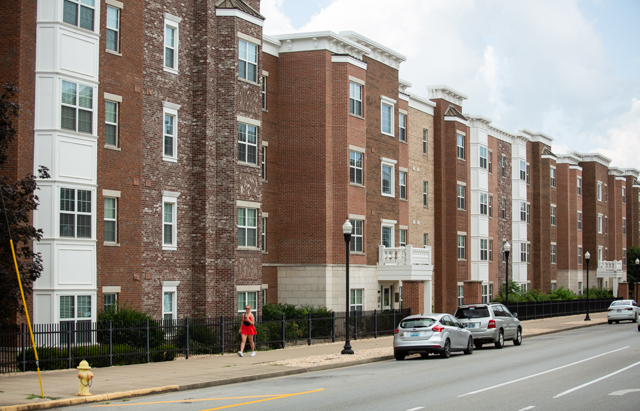perfecting pilates
Published 12:00 am Monday, January 28, 2008

- Photo by David W. Smith/Daily NewsKathy Perry (left) targets a muscle group for Margaret Stein to work on Friday at Precision Pilates.
In one area of Precision Pilates studio, there were women bending and using equipment in unison to help strengthen their bodies with the help of instructor Pamela Lessenberry.
In another area, women who had taken classes before were working out on their own.
Trending
They weren’t just doing any exercise. They were doing Pilates – a non-impact form of exercise designed to balance and tone the body, build strength and stabilize core muscles. Some of the exercises require as little equipment as a mat while others use devices such as a stability chair or spine corrector. The exercise method was developed by Joseph Pilates in the early 1900s.
“I have exercised my entire life – tennis, running, walking, lifting weights,” said Laurie Conley of Bowling Green, who does Pilates three to four times a week and has been taking classes for more than three years. “With Pilates, there’s no wear and tear on your body. You feel stronger, leaner, more toned.”
Other students in the class – many of whom have done Pilates for at least a year – agreed.
“It becomes addictive because you see results,” Barb Ellis of Bowling Green said. “I saw my body totally change. I have a waist now.”
Trudy Harden of Bowling Green said her leap into Pilates came with the birth of a new grandchild.
“I wanted to get on the floor and play with her,” she said. “I have always been active, but I needed to lose weight.”
Trending
Cathy Luster of Bowling Green wanted something with weight resistance benefits, and after much research she found that Pilates fit the bill.
“It’s all about the inner core,” she said of Pilates. “You’re actually pulling from within.”
Precision Pilates co-owners Kathy Perry and Loralee Stephens also teach at the studio. Stephens said she got involved with Pilates while working at a gym in Glasgow. She has also done personal training.
“I’ve been in the fitness industry for 14 years. I’ve taught aerobics,” she said. “I wanted to learn more. There’s always something to learn.”
“More” became Pilates, and she started intensive training about two years ago and became certified. Perry, who had been doing yoga for eight years, began going to Stephens and soon became interested in being certified to teach Pilates.
“I was doing certification more for my body,” she said.
When Stephens became interested in opening a studio, Perry – who has taught Pilates and yoga – never dreamed she would become co-owner.
“I started by helping Loralee find a space,” she said.
Luster and Ellis said one of the things they like about Precision Pilates was the individual attention.
“They do correct you,” she said. “I learned more in two weeks here than I did in two years in another class.”
Harden regards her Pilates class as “my time.”
“I realize the importance of taking care of myself since I found out I had arthritis,” she said.
Conley believes more people should try Pilates, especially since it can be tailored to rehabilitation patients as well as those with varying fitness levels.
“It’s not good for just one age or demographic or population,” she said. “I wish more people would do it while they’re healthy. I’d recommend it for anybody.”
Are you trying to figure out how to eat better now that you’re getting in shape?
Ann Budde, food and nutrition services director and registered dietitian at Greenview Regional Hospital, said that when making a New Year’s Resolution to eat healthier, try to change no more than three things.
“If you get more than that, it gets to be too much to worry with,” she said. “It’s better to keep what you can accomplish under control.”
Makes sure your goals are measurable, Budde said.
“ ‘I’m going to lose some weight’ is not a good goal. Saying ‘I’m going to lose 15 pounds by May 1’ is measurable and doable. You can have a bad week and still lose 15 pounds in four months,” she said. “Saying ‘I’m going to exercise three times a week for a minimum of 30 minutes’ is something that’s measurable and obtainable.”
Look realistically at what you’re willing to do, Budde said.
“If you go in whole hog – say ‘I’m eating all healthy stuff, not going to have any chocolate’ – extremes will usually end in failure,” she said. “All of a sudden you have a kid’s birthday party. They’re going to have cake. You have cake, and you think you’ve blown it. That can make people give up because it’s just too hard to do.”
Don’t give up if you have a bad week, Budde said.
“Instead, say ‘I’m going to get back by exercising more and eating better,’ ” she said. “Just because you had a bad week doesn’t mean you can’t meet your goal.”
Making a resolution to eat healthier doesn’t have to be made at the beginning of the year, Budde said.
“There’s nothing special about Jan. 1,” she said. “You can start a new goal on Jan. 15.”






